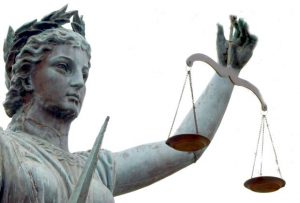 Every driver of an automobile in Florida who is involved in a motor vehicle accident is required to report the event to law enforcement. See § 316.062, Fla. Stat. (2019). From 1971 to 1982, the version of the statute designed to promote this public policy, § 316.066(4), Fla. Stat. (1971), provided that accident reports were confidential and prohibited its disclosure. In 1982, the legislature added a sentence providing an exception to “the confidential privilege afforded by this subsection” for breath, urine, and blood tests. Ch. 82-155, § 6, Laws of Fla. (emphasis added). Based on this language, courts interpreted the statute as creating a true privilege. See Brackin v. Boles, 452 So. 2d 540, 544 (Fla. 1984); Pastori v. State, 456 So. 2d 1212, 1213 (Fla. 2nd DCA 1984); Nationwide, Ins. v. Monroe, 276 So. 2d 547, 548 n.2 (Fla. 2nd DCA 1973). And it became known as the “accident report privilege.” See, e.g., Hammond v. Jim Hinton Oil Co., 530 So. 2d 995, 997 (Fla. 1st DCA 1988); Johnson v. Fla. Farm Bureau Cas. Ins., 542 So. 2d 367, 368 (Fla. 4th DCA 1988); Hill v. Allstate Ins., 404 So. 2d 156, 156 (Fla. 3d DCA 1981).
Every driver of an automobile in Florida who is involved in a motor vehicle accident is required to report the event to law enforcement. See § 316.062, Fla. Stat. (2019). From 1971 to 1982, the version of the statute designed to promote this public policy, § 316.066(4), Fla. Stat. (1971), provided that accident reports were confidential and prohibited its disclosure. In 1982, the legislature added a sentence providing an exception to “the confidential privilege afforded by this subsection” for breath, urine, and blood tests. Ch. 82-155, § 6, Laws of Fla. (emphasis added). Based on this language, courts interpreted the statute as creating a true privilege. See Brackin v. Boles, 452 So. 2d 540, 544 (Fla. 1984); Pastori v. State, 456 So. 2d 1212, 1213 (Fla. 2nd DCA 1984); Nationwide, Ins. v. Monroe, 276 So. 2d 547, 548 n.2 (Fla. 2nd DCA 1973). And it became known as the “accident report privilege.” See, e.g., Hammond v. Jim Hinton Oil Co., 530 So. 2d 995, 997 (Fla. 1st DCA 1988); Johnson v. Fla. Farm Bureau Cas. Ins., 542 So. 2d 367, 368 (Fla. 4th DCA 1988); Hill v. Allstate Ins., 404 So. 2d 156, 156 (Fla. 3d DCA 1981).
In 1989 the statute was changed by deleting (1) the term “privilege,” (2) the language making the information confidential, and (3) the language prohibiting its disclosure outside of the Department. See ch. 89-271, § 2, Laws of Fla. “By deleting this language, the legislature clearly intended to change the statute from a true privilege to a law of admissibility. Indeed, the legislative history provides that the statute was amended “to make it clear that statements made to an officer by a person involved in an accident shall not be admissible in court but shall otherwise be public record.” Fla. H.R. Comm. on Govtl. Ops., PCB GO 89-4 (1989) Staff Analysis 4 (Mar. 31, 1989).” Anderson v. Mitchell, 219 WL 1296458 (Fla. 2nd DCA 2019).
The 2019 version of the statute remains true to the purposes of the 1989 version. In pertinent part, it reads as follows:
(4) Except as specified in this subsection, each crash report made by a person involved in a crash and any statement made by such person to a law enforcement officer for the purpose of completing a crash report required by this section shall be without prejudice to the individual so reporting. Such report or statement may not be used as evidence in any trial, civil or criminal.
Section 316.066(4), Florida Statutes (2019).
Interestingly, even after the substantial changes made in 1989, courts continued to refer to the statute as creating an “accident report privilege.” See, e.g., Perez v. State, 630 So. 2d 1231, 1232 (Fla. 2d DCA 1994); Wetherington v. State, 135 So. 3d 584, 585 (Fla. 1st DCA 2014); Alexander v. Penske Logistics, Inc., 867 So. 2d 418, 420 (Fla. 3d DCA 2003). Some courts have also used language describing the post-1989 version of section 316.066(4) as making the statements both inadmissible and privileged. See, e.g., Perez, 630 So. 2d at 1232; Nelson v. State Dep’t of Highway Safety & Motor Vehicles, 757 So. 2d 1264, 1265 (Fla. 3d DCA 2000).
Continue reading
 Workers injured in motor vehicle crashes while in the course and scope of employment may be eligible for compensation through uninsured/under-insured (UM/UIM) motor vehicle insurance. UM covers losses sustained by the insured, passengers, and family members through the fault of a party who fails to maintain Bodily Injury (BI) insurance. Hit-and-run and “phantom vehicle” scenarios also fall under UM coverage. UIM covers losses that exceed the limits of coverage available under the at-fault party’s BI insurance. Those same injured workers could also be eligible for workers’ compensation benefits for the same accident.
Workers injured in motor vehicle crashes while in the course and scope of employment may be eligible for compensation through uninsured/under-insured (UM/UIM) motor vehicle insurance. UM covers losses sustained by the insured, passengers, and family members through the fault of a party who fails to maintain Bodily Injury (BI) insurance. Hit-and-run and “phantom vehicle” scenarios also fall under UM coverage. UIM covers losses that exceed the limits of coverage available under the at-fault party’s BI insurance. Those same injured workers could also be eligible for workers’ compensation benefits for the same accident. Florida Injury Attorney Blawg
Florida Injury Attorney Blawg








